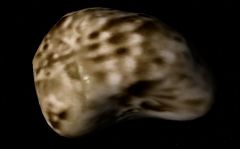Difference between revisions of "Adrastea"
Jump to navigation
Jump to search
(Added categories.) |
(Added category.) |
||
| Line 6: | Line 6: | ||
|colspan="2" align="center"|[[Image:Adrastea-jupiteriizip.jpg|240px]] | |colspan="2" align="center"|[[Image:Adrastea-jupiteriizip.jpg|240px]] | ||
|- | |- | ||
| − | |colspan="2" align="center"|'''Adrastea from jupiter_ii.zip in Orbiter 2002''' | + | |colspan="2" align="center"|'''Adrastea from ''jupiter_ii.zip'' in Orbiter 2002''' |
|- | |- | ||
!bgcolor="lightsteelblue" colspan="2"|Designation | !bgcolor="lightsteelblue" colspan="2"|Designation | ||
| Line 75: | Line 75: | ||
[[Category:Celestial bodies]] | [[Category:Celestial bodies]] | ||
[[Category:Natural satellites]] | [[Category:Natural satellites]] | ||
| + | [[Category:Satellites of Jupiter]] | ||
Revision as of 02:49, 8 August 2024
 | This natural satellite related article is a stub. You can help Orbiterwiki by expanding it.
Adrastea (Jupiter XV, S/1979 J 1) is the second known moon by distance and the smallest of the four of the inner moons of Jupiter. It was the first moon ever discovered by an interplanetary spacecraft, discovered during the 1979 flyby of Jupiter by Voyager 2. Adrastea was the foster mother of the Greek god Zeus. Adreastea in OrbiterAdreastea was introduced to Orbiter with the release of jupiter-ii.zip in October 2002.
See alsoGallery
| ||||||||||||||||||||||||||||||||||||||||||||||||||||||||||||||||||||||||||||||||


